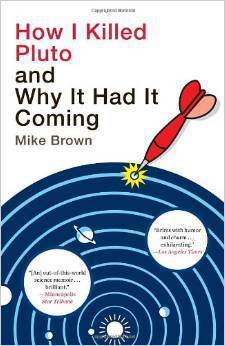Kate Rauner's Blog, page 90
December 31, 2014
Starlight – Haiku by Kate Rauner
December 27, 2014
The Sirens of Titan and Vonnegut’s Writing Rules

Vonnegut during his military service. I get the impression he didn’t like the experience much.
Kurt Vonnegut is a giant of 20th century authors and Sirens of Titan, his second novel, is now available as an e-book. While Vonnegut is usually called a science fiction author, this book is more a frame for his views on religion, politics, business, social classes, the military, and the meaninglessness of life: “the boundaries of space, of infinite outwardness, were three: empty heroics, low comedy, and pointless death.” It reminds me of Albert Camus’ absurdism.
This isn’t simply a space adventure, though time/space phenomena and space travel allow the characters wide and imaginative experiences. Vonnegut’s book is copyrighted 1959 – if the story were written today, it would say “quantum physics” often. There’s a lot of striking metaphors and some fun visions of other planets. Also one fleeting, archaic anti-homosexual remark made in passing – 1959 was a long time ago.
It doesn’t seem appropriate to compare Sirens to the usual writing tips. The book is full of tangents and philosophizing. Vonnegut isn’t afraid to “tell” the reader something. He includes an “excerpt” from an encyclopedia to explain his premise – without even bothering to frame it as something a character is reading. It’s cast as from A Child’s Cyclopedia, which avoids any need to justify things technically.
Vonnegut conforms perfectly to one piece of writing advice that I’ve absorbed: use “said” as the tag for dialog (though he does slip in the occasional adverb – my favorite is “schoolmarmishly.”)
I also considered this advice from Smashwords: don’t mislead your readers as to what your book is about. While this relates to the description and cover rather than writing the book, I think it’s important. On Amazon, the description calls the book a “romp through space, time, and morality… and a prophetic vision about the purpose of human life.” I’m not sure I’d call it prophetic – I’d emphasize the black comedy and satire. But the characters certainly romp around and the story reveals a humbling purpose for humanity. The cover, alas, tells nothing.
Vonnegut suggested eight rules for writing a short story in 1999. That reflects decades of writing experience, and even though Sirens is a novel, I thought I’d look at them.
Use the time of a total stranger in such a way that he or she will not feel the time was wasted. Judging by the four star average on Amazon, Sirens does this for most readers.
Give the reader at least one character to root for. Not so much. I never connected with any of the characters. But, it was only his second novel.
Every character should want something, even if it is only a glass of water. Most of the characters want something, though two have their memories erased so things change. The character responsible for most of what happens is a puzzle – it’s not clear he wants anything – he’s just trapped by the space/time phenomenon.
Every sentence must do one of two things—reveal character or advance the action. (Of course, there’s more room in a novel than a short story.) Vonnegut abandons this advice – if he wants to go off on a narrator’s tangent, he does. Mostly, these were short enough and interesting enough that I didn’t mind, but in the last chapter I got impatient – I just wanted to know how the story ends.
Start as close to the end as possible. Given the narrator’s explanations of some character’s early lives, I’m not sure he sticks to this.
Be a Sadist. No matter how sweet and innocent your leading characters, make awful things happen to them—in order that the reader may see what they are made of. Vonnegut subjects his characters to lots of trouble. This is advice I need to remember when I write.
Write to please just one person. If you open a window and make love to the world, so to speak, your story will get pneumonia. Compelling advice. I imagine he wrote Sirens for himself. I’ve seen related advice that says: Write for your self and edit for your readers,
Give your readers as much information as possible as soon as possible. To hell with suspense. Readers should have such complete understanding of what is going on, where and why, that they could finish the story themselves, should cockroaches eat the last few pages. I don’t think I would have finished the story the same way, but the character the narrator primarily follows knew exactly what was going to happen to him on page 20. The story arose from how it happened. Vonnegut deviated a little, though – the character’s final situation was not revealed until the end.
Vonnegut added that great writers tend to break rules.
I’ve posted on writing advice before:
Writers’ Resource: Critiques Available
Successful Novel Defies Standard Advice – Never Let Me Go
Sphere: Hit SciFi Novels Follows Some Advice, Flaunts Other
Maze Runner and Writing Advice

December 25, 2014
Happy Christmas
December 24, 2014
The Face of Jesus
 This has always fascinated me – I’m familiar with medieval artistic traditions portraying Jesus of Nazareth as a tall, slender figure with flowing hair, light colored eyes, and a decidedly European appearance. But the Gospel of Matthew says, when the Romans arrested Jesus in the garden of Gethsemane, Judas had to show the soldiers which one was Jesus because they couldn’t tell him apart from his disciples. So Jesus was a man who looked like other men of his time and place. What did he really look like? Popular Mechanics produced an answer in 2002 using forensic anthropology, and it’s still my favorite. Happy Xmas.
This has always fascinated me – I’m familiar with medieval artistic traditions portraying Jesus of Nazareth as a tall, slender figure with flowing hair, light colored eyes, and a decidedly European appearance. But the Gospel of Matthew says, when the Romans arrested Jesus in the garden of Gethsemane, Judas had to show the soldiers which one was Jesus because they couldn’t tell him apart from his disciples. So Jesus was a man who looked like other men of his time and place. What did he really look like? Popular Mechanics produced an answer in 2002 using forensic anthropology, and it’s still my favorite. Happy Xmas.

December 20, 2014
Lois Lowry’s Book The Giver and Writing Tips
 In my continuing quest to understand popular science fiction, I recently read The Giver by Lois Lowry. The book won a Newbery Medal and was made into a movie. In an author’s note, Lowry relates mail she received from people who say how important the novel was for them and that some have named their own sons after one of the characters. The edition I checked on Amazon has 7,099 customer reviews and 4 1/2 out of 5 stars. That’s 83% 4 and 5 star ratings which certainly qualifies as popular. (As always on Amazon, some of the poorest ratings refer to receiving a damaged book and not to the content.)
In my continuing quest to understand popular science fiction, I recently read The Giver by Lois Lowry. The book won a Newbery Medal and was made into a movie. In an author’s note, Lowry relates mail she received from people who say how important the novel was for them and that some have named their own sons after one of the characters. The edition I checked on Amazon has 7,099 customer reviews and 4 1/2 out of 5 stars. That’s 83% 4 and 5 star ratings which certainly qualifies as popular. (As always on Amazon, some of the poorest ratings refer to receiving a damaged book and not to the content.)
The Giver is a short book – 125 pages for the story (not counting the introduction, sample from another book, etc.) in my Epub version. My version contains the first chapter of the next book in the series and it seems to be a different set of characters in a different setting, but from Jennie M on Amazon: “I recommend reading all three books, The Giver, Gathering Blue, and The Messenger. The final book does sort of bring a finalization of these characters.” And yet Natalie Martinez writes: “The next book had absolutely nothing to do with the first.”
The book opens in a utopian world, following the young boy Jonas. We learn about aspects of the world that are uncomfortable and disquieting – it would not be a utopia for us. But the people in it seem content. Then, at age twelve, something unusual (almost unique) allows Jonas to learn more about his world. The book becomes a thought-provoking examination of good and bad in our own world, and what trade-offs a society might be willing to make between pain and pleasure.
The book veers off in a different direction at the end. After being primarily cerebral, the story ends in ambiguous action and (perhaps) hopelessness. One Amazon reviewer, a middle-school teacher, says she assigns her students to write their own ending, which I think would be a fun assignment.
The Giver’s type of ending seems to belong to literary fiction rather than science fiction. (The movie version is called a drama/fantasy.) One piece of advice I found on Smashwords says “never mislead your readers” about the genre of a book. Smashwords offers 27 genre categories and 11 sub-categories within science fiction – “utopia/dystopia” is a subcategory.
Once again, I have learned that even the most successful book does not appeal to everyone. Keep that in mind when your own work gets a negative review.
What about standard writing tips? I don’t think following or violating any of these tips figures in reviews of The Giver. But if you get a mechanical aspect of writing correct, I suppose no one will comment. Here are a few tips I considered:
Advice: Tag dialog only with “said” and maybe “ask” and nothing else. Omit the tags when it is clear who is speaking.
Lowry omits many tags. For example: “His mother agreed, smiling. ‘The year we got Lily…'”
But she is not afraid to use saidisms. All these examples tagged dialog:
Father confided
he went on
the attendant told him
muttered
pointed out
began
replied
called
suggested
commented
whispered
Advice: Characters should have demographic, family, and psychological histories.
Lowry does this for Jonas and it is important to the story.
Advice: Show, don’t tell.
Lowry follows this advice and provides an interesting way for the Giver to “show.”
Advice: Paragraphs should be neat and utilitarian, don’t use show-off vocabulary, avoid passive tense. These tips come from Stephen King.
Lowry uses all these tips.
Advice: Purge adverbs.
I found 13 uses of “very” in the first 18 pages and didn’t count further. “Just” appeared 15 times in 44 pages. Words ending in “fully” (such as carefully, fretfully, painfully) appeared 18 times in 53 pages.
I haven’t tried counting adverbs in other books so I don’t know how this compares, but Lowry does use adverbs.
Aside: Adverbs are words that describe (modify) verbs, adjectives, and other adverbs. English Club lists the 25 most common adverbs. “Very” is 13th; “just” is 4th. A more interesting list is at Grammar Revolution.
These are links to some of my other posts on writing tips:
Writers’ Resource: Critiques Available
Successful Novel Defies Standard Advice
Sphere: Hit SciFi Novels Follows Some Advice, Flaunts Other

December 17, 2014
The Smell of Life – a poem by Kate Rauner
Methane can be made by life
Or hydrothermal systems,
By microbes in the regolith
Or from the rocks, if not them.
Methane doesn’t last for long
Floating in the atmosphere.
Tens of decades, then it’s gone,
Reacting in the sunlight there.
What Curiosity has found,
Unexpected and delighted,
A whiff arising from the ground
Has scientists excited.
It doesn’t mean that there is life
Or that there was in past
It means we have a lot to learn
Before we’ll know at last.
What difference would it make to us?
Bugs aren’t likely to converse.
Even if they share our Sun,
Are we better off or worse?
I for one would thrill to know,
To find conclusive data.
Even if it pays no gold,
Life will always matter.
A couple wisps of methane found on Mars. It might be geochemistry, and there’s more to learn about that, too. But it could indicate the existence of life. Stay tuned.
Huffingtonpost, NYtimes, and many other sources

December 13, 2014
Pluto – We Are Coming
 Way back in 1999 I read a book Pluto and Charon - Ice Worlds on the Ragged Edge of the Solar System by Alan Stern & Jacqueline Mitton. I learned that plutophiles share a remarkable dedication. For example, when a rare occultation of a star by Pluto was visible only in Israel, “[a]s luck would have it, the great Israeli-Jordanian airwar was just then taking place overhead… Almost unbelievably, [the astronomers] managed to observe the event despite the circumstances overhead…[producing] the only astronomical observation ever made through a sky filled with dog-fighting”. Their observations led to the discovery that Pluto has an atmosphere.
Way back in 1999 I read a book Pluto and Charon - Ice Worlds on the Ragged Edge of the Solar System by Alan Stern & Jacqueline Mitton. I learned that plutophiles share a remarkable dedication. For example, when a rare occultation of a star by Pluto was visible only in Israel, “[a]s luck would have it, the great Israeli-Jordanian airwar was just then taking place overhead… Almost unbelievably, [the astronomers] managed to observe the event despite the circumstances overhead…[producing] the only astronomical observation ever made through a sky filled with dog-fighting”. Their observations led to the discovery that Pluto has an atmosphere.
When Eris was discovered in 2005, it became clear Pluto wasn’t a unique oddity but a member of a class of objects – the largest “plutino” in the Kuiper belt, but smaller than Eris in the scattered trans-Neptune disk. Pluto was famously downgraded to dwarf planet status by the International Astronomical Union in 2006 and many people were furious.
The last chapter of Stern and Mitton’s book described the slow progress towards launching a mission to Pluto. The authors noted “it will take NASA more years to get the Pluto mission out of the Washington, D. C. beltway, than Pluto Express would need to cross the whole solar system!” But they were optimistic a mission would be launched and ended with “guard your secrets while you can, Pluto! We are coming.”
They were wrong about one thing – it only took seven more years to launch the spacecraft New Horizons on January 19, 2006; while it’s taken nine years for the craft to reach Pluto. Alan Stern leads its team. Its systems have been activated and the exploration of Pluto and its many moons begins January 15, 2015.
Why spend millions of dollars to learn about a few rocky ice-balls at the edge of our solar system when there are so many problems here on Earth? That question implies money is all we need to solve our earthly dilemmas, but politics, prejudice, and pig-headedness are bigger impediments. If we wait until we solve all of today’s problems, we’ll never get to tomorrow. As Bill Dunford said, why waste time trying to figure out agriculture? We have so much work to do hunting and gathering. Why spend effort on boats? We have so many issues here on the land. Why fiddle with computers? There’s so much calculating to be done with these pencils.
Why explore space? To find out why. Good luck, New Horizons.

December 10, 2014
Pluto! We Are Coming! a poem by Kate Rauner

If you were standing on Pluto…
Pluto, god of underworld,
God in darkness, god in cold,
Fit to reign, but not below,
Not given domain over souls.
You mark an area of space,
Not under sea or under hill,
But far away and high above,
A belt of frozen volatiles.
Beyond the giant planets
Large objects should exist,
Not thinly scatter icy crumbs,
Never did we look for this.
Humans did not make the trip,
An imager to be our eyes.
We have a way to count the dust,
Spectrometers to scan your skies.
What surprises now await
To teach us of creation?
When sun was young and planets
Were early in formation?
Why are you red, not white or gray?
Our ignorance is stunning.
Now instruments are aimed at you.
Pluto! We are coming!
After a nine-year journey, NASA’s spacecraft New Horizons is about to answer some questions and raise a whole lot more.

December 6, 2014
Tomb and Throne
 The famous king, scion of an ancient royal dynasty, conquers a large empire. He dies in his new capital city, perhaps poisoned, perhaps from a disease picked up in his far-flung military campaigns aggravated by years of heavy drinking and many war wounds. In the battle for his throne, one of his generals puts his wife and young son to death, eliminating his obvious heir. His mother continues to wield political power, until the traitorous general murders her, too. But don’t feel too sorry for her – she may have assassinated her husband to help her son take the throne.
The famous king, scion of an ancient royal dynasty, conquers a large empire. He dies in his new capital city, perhaps poisoned, perhaps from a disease picked up in his far-flung military campaigns aggravated by years of heavy drinking and many war wounds. In the battle for his throne, one of his generals puts his wife and young son to death, eliminating his obvious heir. His mother continues to wield political power, until the traitorous general murders her, too. But don’t feel too sorry for her – she may have assassinated her husband to help her son take the throne.
This king isn’t a character in the latest fantasy best-seller, it’s Alexander the Great. Now archeologists may add to his story with a wonderful mosaic uncovered in a tomb from the end of Alexander’s reign, near the ancient site of Amphipolis in northern Greece. The large mosaic shows the God of the Underworld kidnapping a red-haired goddess who will become his queen.
The large tomb was clearly intended for someone of importance from the period of Alexander’s death. The motif of a queen carried to the underworld leads to speculation the tomb’s occupant was a woman, and possibly Alexander’s wife Roxane or mother Olympias. There is even some basis for believing the mosaic depicts Alexander himself with his parents cast in the roles of gods. “Only time, and further excavation, will tell.”

December 5, 2014
“Day One of the Mars Era”
 Lots of sources are reporting on this:
Lots of sources are reporting on this:
“The star of the day is Orion,” said NASA Administrator Charles Bolden Jr., according to the AP. He called the success “Day One of the Mars era.” The Atlantic
I’m working on a concept for a book set in a colony on Mars. I think the first settlers on Mars will have a difficult life. I don’t think I want to go – not that it’s likely to come up.








